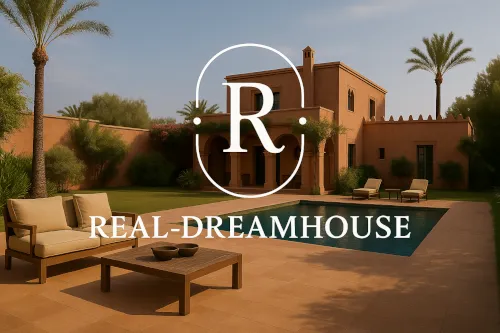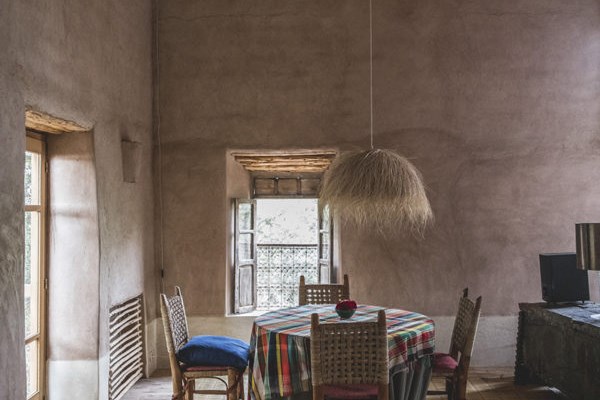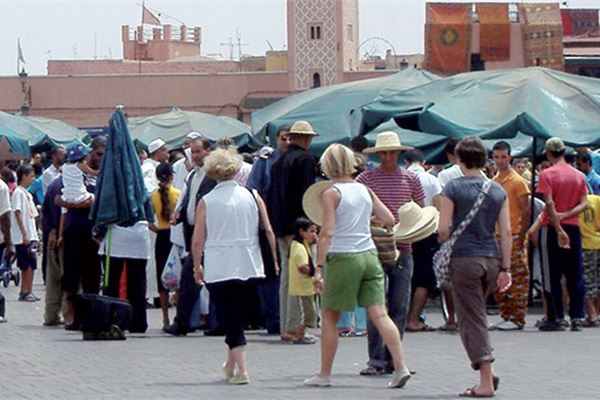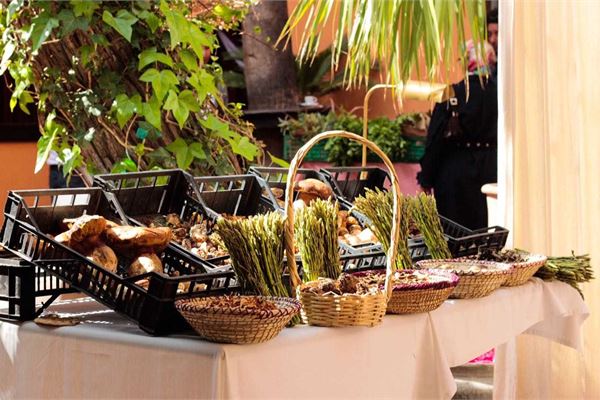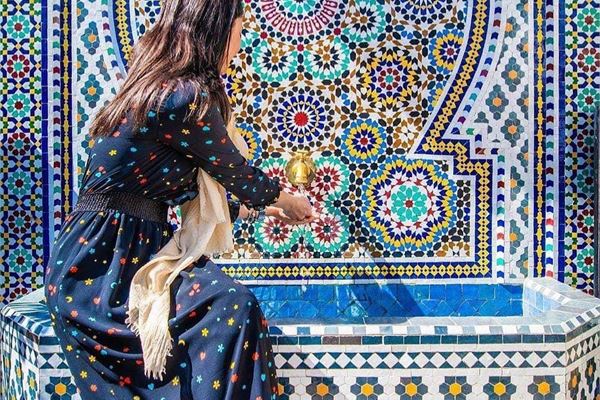
The Art of Zellige: Moroccan Tradition and Craftsmanship
the art of zellige: moroccan tradition and craftsmanship
01 July 2025
Zellige, this shimmering Moroccan mosaic, represents one of the most precious treasures of national craftsmanship. Born over a thousand years ago in the workshops of Fez, this ancestral art continues to fascinate with its beauty and the complexity of its creation.
An Ancient Tradition
The history of zellige begins in the 10th century when Moroccan artisans developed this unique technique of glazed tiling. The word "zellige" comes from the Arabic "al zulaycha," meaning "little polished stone," a name that reveals the delicacy of this craft. The most beautiful examples of ancient zellige still adorn the historical monuments of Fez today, notably the Al-Qarawiyyin Mosque and the madrasas of the imperial city. These masterpieces testify to a technical mastery that has been passed down from generation to generation without losing its excellence.
The Expertise of Master Artisans
The creation of zellige follows an artisanal process of rare complexity. It all begins with the extraction of a special clay in the Salé region, with unique properties that give zellige its characteristic strength and beauty. This clay is first kneaded and shaped into slabs, then fired for the first time in traditional kilns at 900 degrees. This step transforms the clay into "fakhkhar," a terracotta biscuit ready to be shaped. Then comes the most spectacular phase: hand cutting. Artisans use a traditional tool called "menqach" to cut each tessera with millimetric precision. Despite the entirely manual production, each piece perfectly respects the required dimensions.
The Colors of Zellige
Enameling is the step that gives zellige its emblematic colors. The tesserae are dipped in a transparent glaze and then fired a second time at 950 degrees. This double firing gives zellige its inimitable shine and remarkable weather resistance. The traditional palette includes the white of Fez, the green of nature, cobalt blue, saffron yellow, and the brown of the earth. Each color has its own history and symbolism in Moroccan decorative art.
The Art of Assembly
The assembly of the tesserae reveals the artistic dimension of zellige. The specialists in laying, called "ferrach," transform these thousands of small colored pieces into geometric compositions of striking complexity. Traditional patterns follow the rules of Islamic art, creating infinite geometric patterns that evoke divine harmony. These designs have evocative names like "taqsim," "sebka," or "khatam," each conveying its own symbolism.
The Training of Artisans
The apprenticeship of zellige follows an age-old tradition. Future artisans start very young, often around twelve or thirteen years old, and progress according to a strict hierarchy. It takes at least seven years to master the basics of the trade. The apprentice begins with the simplest tasks: sorting tesserae, preparing materials, observing the masters' gestures. Gradually, they learn cutting, then assembly, until they can eventually reach the rank of "maâlem," a master artisan capable of supervising the entire process.
Between Tradition and Modernity
Today, the art of zellige is experiencing a remarkable resurgence of interest. While traditional Moroccan palaces and riads continue to call on artisans for their restorations and decorations, international demand continues to grow. Architects and decorators worldwide appreciate the authenticity and unique beauty of zellige. Prestigious projects now incorporate this Moroccan mosaic, helping to showcase national craftsmanship on the international stage.
Current Challenges
Despite this success, the future of zellige raises some concerns. The trade, physically demanding and requiring long training, sometimes struggles to attract younger generations who turn to more economically attractive sectors. To address these challenges, various initiatives are emerging. Professional training programs modernize learning while preserving traditional techniques. Artisan cooperatives are also developing new, more sustainable economic models.
A Heritage to Preserve
Zellige represents much more than just a decorative art. It embodies the creative soul of Morocco, this unique ability to transform raw material into pure beauty. Each tessera carries within it centuries of expertise and artistic passion. In an increasingly industrialized world, zellige reminds us of the value of artisanal work, patience, and precision. It testifies to a time when the artisan was also an artist, where each gesture was imbued with meaning and beauty.
The Future of Zellige
The growing international recognition of zellige offers new perspectives to Moroccan artisans. This appreciation helps restore the trade's noble status and raises awareness among new generations about the importance of preserving this exceptional heritage. The art of zellige thus continues its journey through the centuries, carried by expert hands that perpetuate an ancient tradition. As long as there are masters to transmit their knowledge and apprentices to receive it, this Moroccan mosaic will continue to make walls around the world shine with its eternal reflections.
L'équipe de Real-dreamhouse
Notre équipe dynamique et dédiée à la clé de votre succès. Nous offrons un service professionnel sur mesure, respectant des standards élevés pour réaliser vos ambitions immobilières.

Benoit PRIVEL
Fondateur Manager
Salwa SAMSAK
Manager Événementiel
Sophie BELLAVOINE
Manager Consultant
Tawfik BOUAMANE
Consultant Manager RabatContact us for a free valuation of your property!
Get a free and reliable valuation of your property in Marrakech, carried out by our local experts.
